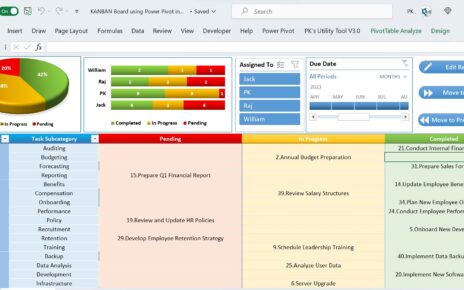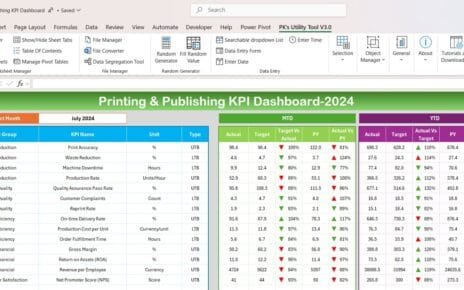In today’s fast-paced world, effective project management is essential for timely delivery, team coordination, and meeting deadlines. One tool that stands out for organizing project timelines, tracking milestones, and managing records efficiently is the Project Timeline Dashboard in Excel. This ready-to-use Excel template helps managers keep track of project stages, deadlines, and priorities all in one place.
Click to buy Project Timeline Dashboard in Excel
With this dashboard, Excel users can add, update, and delete project records effortlessly, while a variety of charts help visualize the progress. This article covers the key features of this template, best practices, opportunities for improvement, and answers to frequently asked questions.
Key Features of the Project Timeline Dashboard in Excel
The Project Timeline Dashboard template is divided into two main sections: Timeline Sheet and Support Sheet. Each of these sheets plays a distinct role in making project management easier and more efficient.
Click to buy Project Timeline Dashboard in Excel
Timeline Sheet

The Timeline Sheet is the heart of the dashboard, where users can view, add, update, and delete project records. This sheet contains essential visualizations, buttons, and tables that help users track project milestones at a glance.
Click to buy Project Timeline Dashboard in Excel
Buttons for Managing Project Information
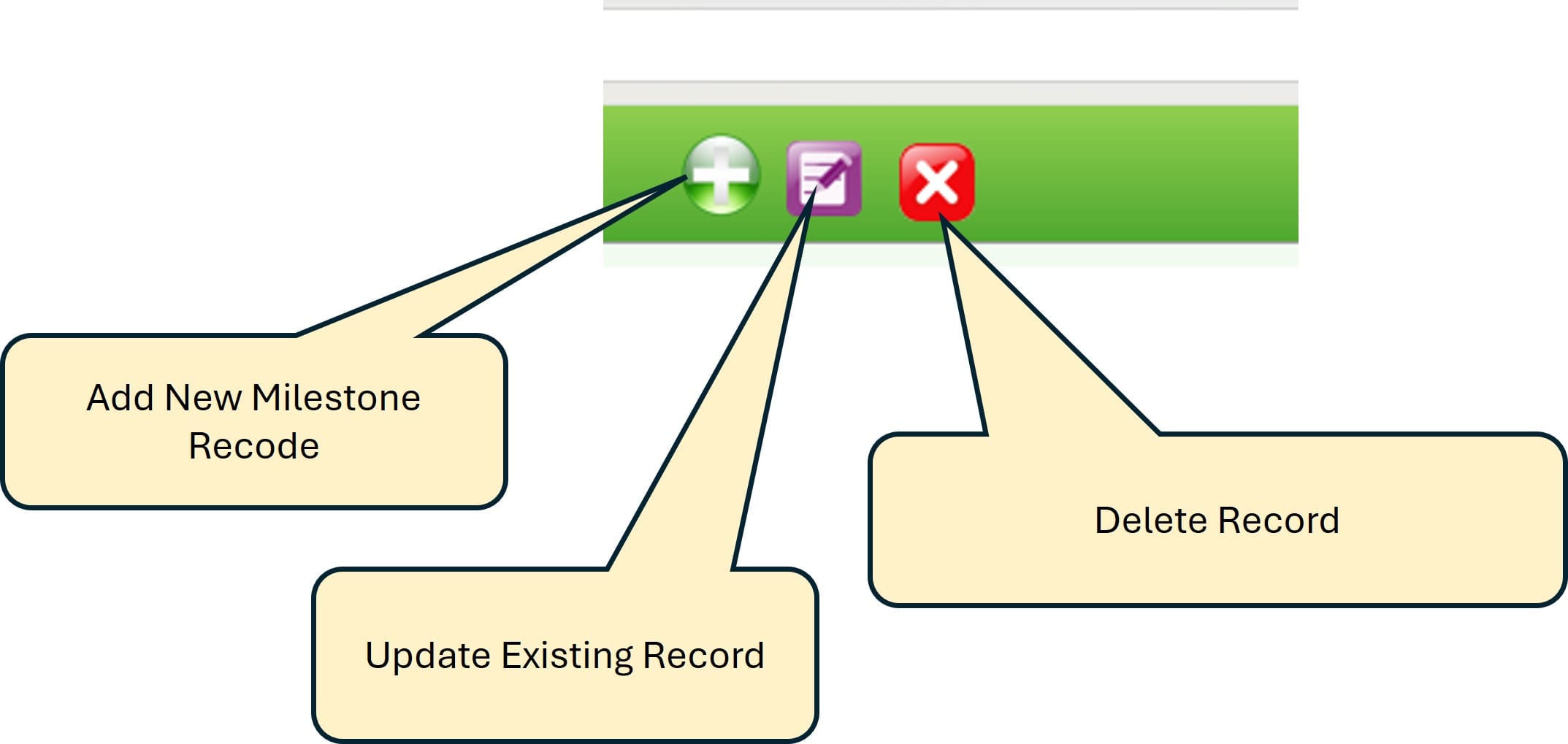
Click to buy Project Timeline Dashboard in Excel
Add New:
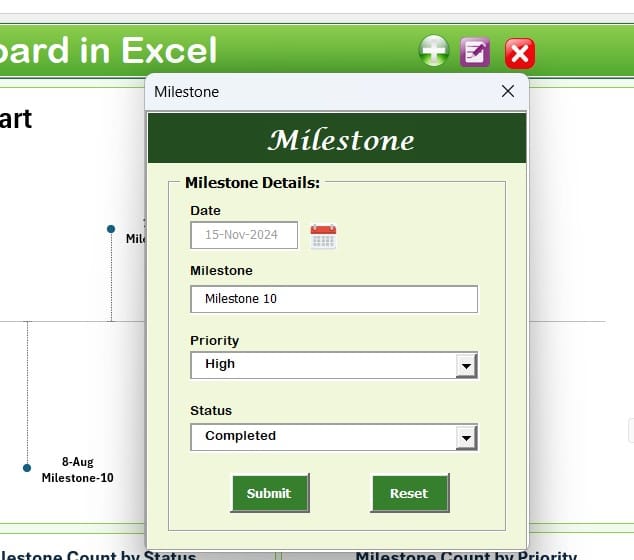
Click to buy Project Timeline Dashboard in Excel
- Allows users to add a new project record using a simple form. This feature is especially useful for projects that require constant tracking and updates.
- Update Existing Record: Easily update the details of any existing record with just a few clicks, keeping the timeline data accurate and current.
- Delete Record: If a record is no longer relevant, users can delete it using this button, keeping the dashboard uncluttered.
Timeline Chart
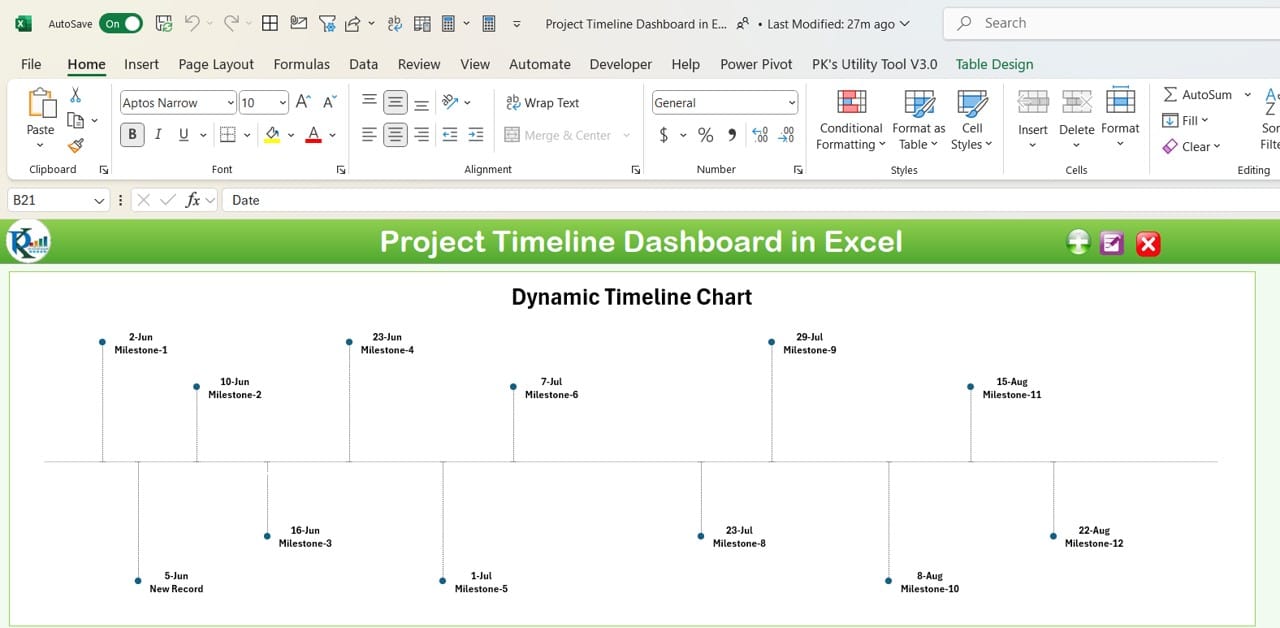
Click to buy Project Timeline Dashboard in Excel
- A Milestone Timeline Chart is displayed at the top, which updates automatically as new milestones are added. This chart visually represents the milestones with color-coded progress, allowing users to quickly understand the project’s progress at a glance.
- Data Table
Below the timeline chart is a data table that stores all the project records entered through the forms. This table is the data source for generating the timeline chart and other visualizations.
Click to buy Project Timeline Dashboard in Excel
Milestone Count Charts
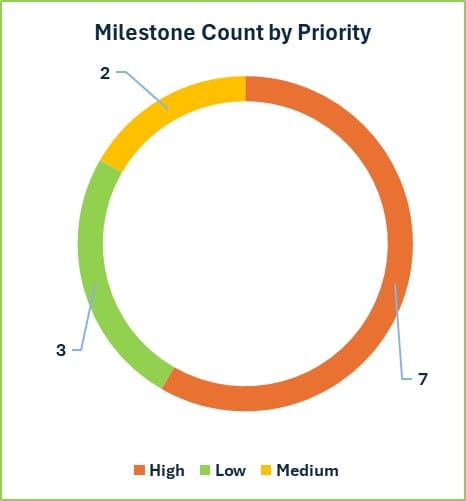
Click to buy Project Timeline Dashboard in Excel
Visualizing milestone status and priority levels is crucial for quick project assessments. The dashboard features two key charts for this purpose:
Milestone Count by Status (Pie Chart)
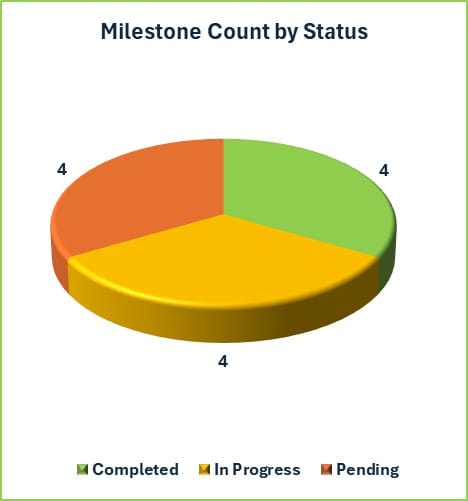
Click to buy Project Timeline Dashboard in Excel
- This chart categorizes milestones by status—Pending, In Progress, and Completed—giving an instant overview of project progress.
- Milestone Count by Priority (Doughnut Chart): This chart highlights milestones based on priority—High, Medium, and Low. It’s an excellent way to prioritize resources and ensure attention to high-priority tasks.
Click to buy Project Timeline Dashboard in Excel
Support Sheet
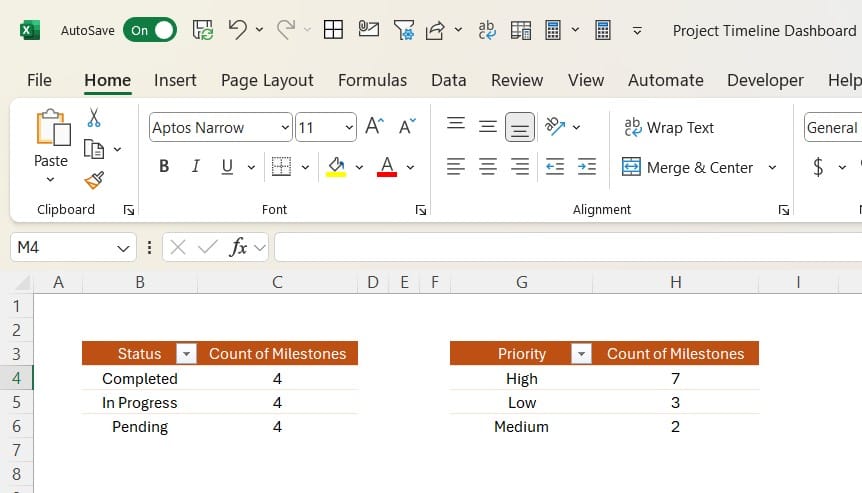
Click to buy Project Timeline Dashboard in Excel
The Support Sheet is a hidden worksheet used to generate pivot tables for the charts in the Timeline Sheet. It provides the data backbone without cluttering the visible parts of the dashboard.
Advantages of Using a Project Timeline Dashboard in Excel
Using this Project Timeline Dashboard brings a range of advantages that streamline project management, especially for those looking to maximize productivity through a simple tool.
- Clear Visualization of Project Progress: This dashboard provides a visual overview of project milestones, deadlines, and priorities, making it easier to track the project’s current status.
- Automated Data Management: The add, update, and delete buttons ensure that data is always current and eliminate the need for manual updates, saving time and reducing errors.
- Improved Resource Allocation: With priority-based charts, managers can allocate resources to high-priority tasks, ensuring that essential milestones receive the attention they deserve.
- Ease of Use: The template’s simple layout and interactive features make it easy for anyone, even those without technical expertise, to use and manage projects efficiently.
Best Practices for Using the Project Timeline Dashboard
Following these best practices will ensure that you get the most out of your Project Timeline Dashboard:
- Regularly Update the Dashboard: Add, update, and delete project records as soon as changes occur. Consistent updates keep the timeline accurate and reliable.
- Prioritize High-Impact Milestones: Use the Priority Doughnut Chart to focus on milestones that matter most. Allocate resources to these tasks to ensure they are completed on time.
- Monitor Project Status Weekly: Regularly check the Milestone Count by Status chart. Tracking the progress weekly helps in taking timely corrective actions if the project veers off track.
- Use the Support Sheet for Advanced Analysis: The Support Sheet can be customized to generate additional pivot tables or reports. For those with Excel expertise, this sheet opens up opportunities for deeper analysis.
Opportunities for Improvement in the Project Timeline Dashboard
While the Project Timeline Dashboard is a powerful tool, there are always areas where it could be even better:
- Automated Notifications for Upcoming Deadlines: Adding email notifications for deadlines could remind users of important tasks as their due dates approach.
- Customizable Charts and Visualizations: Some users may require more personalized visualizations. Making charts customizable to specific project needs could add even more value.
- Enhanced Filtering Options: Allowing users to filter the dashboard based on categories like project phase, responsible team members, or client would make it easier to handle complex projects with multiple layers.
- Additional Metrics: Including metrics like completion rate, delay frequency, or team performance could offer a comprehensive project overview.
How to Create and Use the Project Timeline Dashboard in Excel
Setting up and using the Project Timeline Dashboard is straightforward, and this step-by-step guide will walk you through the process:
- Download the Dashboard Template: First, download the pre-built Project Timeline Dashboard template.
- Input Initial Project Data: Begin by entering the existing project data into the data table on the Timeline Sheet. This data will populate the timeline chart and milestone charts automatically.
- Add, Update, or Delete Project Records: Use the three buttons provided to add, update, or delete records. Each button opens a form where you can enter project details, and all changes reflect instantly on the dashboard.
- Analyses Project Status with Milestone Charts: Regularly review the pie and doughnut charts for milestone status and priority. These charts provide quick insights into what areas need focus.
Conclusion
The Project Timeline Dashboard in Excel is an invaluable tool for project managers, team leaders, and anyone involved in coordinating project tasks. Its user-friendly interface, clear visuals, and interactive features make it easy to track project timelines and milestones effectively. By following the best practices outlined in this article and considering the improvement opportunities, you can maximize the utility of this dashboard.
Frequently Asked Questions (FAQs)
Q1: How can I add a new project record in the Project Timeline Dashboard?
To add a new record, click the Add New button at the top right of the Timeline Sheet. This opens a form where you can enter the project details, which are automatically added to the data table.
Q2: Can I customize the milestone charts?
Yes, you can customize the milestone charts. Go to the Support Sheet and modify the pivot tables or chart settings as needed. Advanced users can even add new types of visualizations.
Q3: Is it possible to set reminders for upcoming milestones?
Currently, the template doesn’t support automated reminders. However, you can set Excel notifications using VBA or integrate the dashboard with Outlook to receive reminders for deadlines.
Q4: How can I reset the dashboard if I want to start a new project?
To start fresh, delete the existing data from the data table on the Timeline Sheet, or create a backup file for your current project before clearing the data.
Q5: Can I add more milestone categories beyond High, Medium, and Low?
Yes, you can add more categories by modifying the data validation list on the Support Sheet. Remember to update the charts accordingly to reflect the new categories.
This article provides a comprehensive guide to using the Project Timeline Dashboard in Excel, making it a valuable asset for managing project timelines and enhancing productivity. With clear steps, best practices, and actionable improvements, this dashboard empowers users to handle projects of all sizes with ease.
Click to buy Project Timeline Dashboard in Excel
Visit our YouTube channel to learn step-by-step video tutorials
Watch the step-by-step video tutorial:
Click to buy Project Timeline Dashboard in Excel

